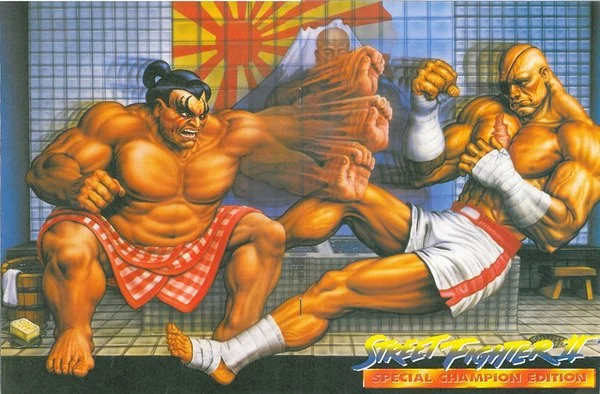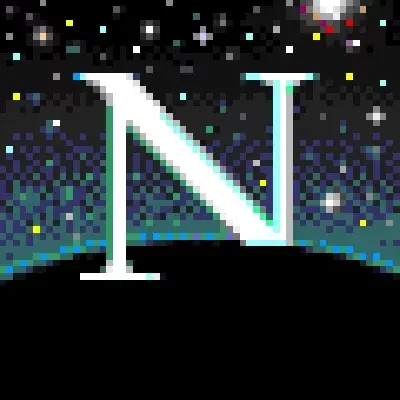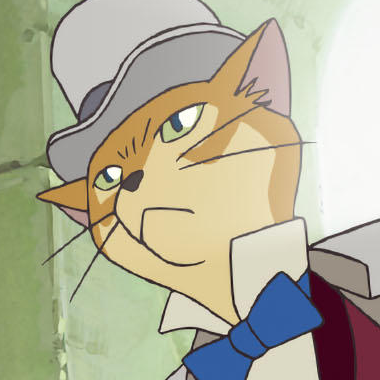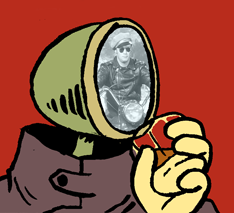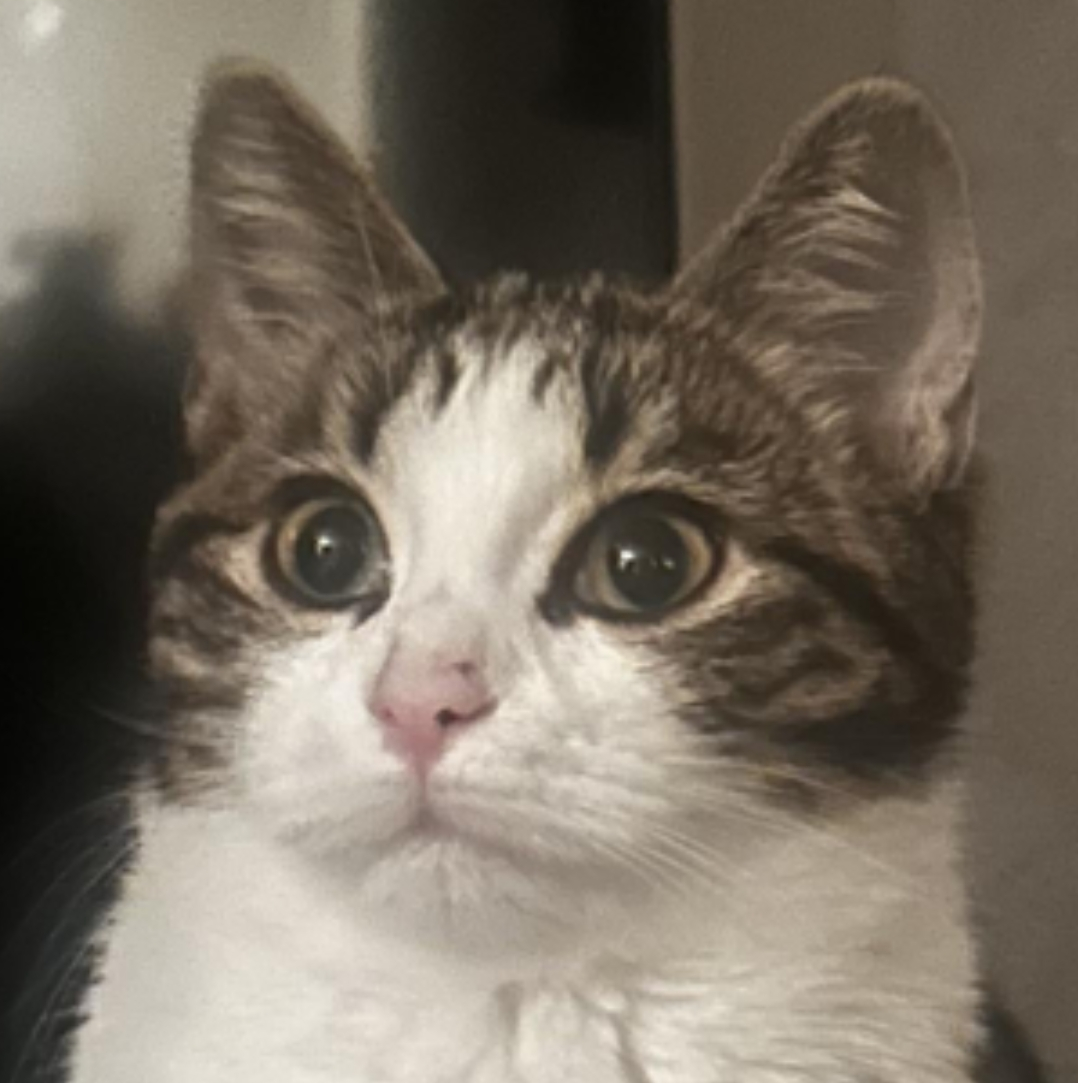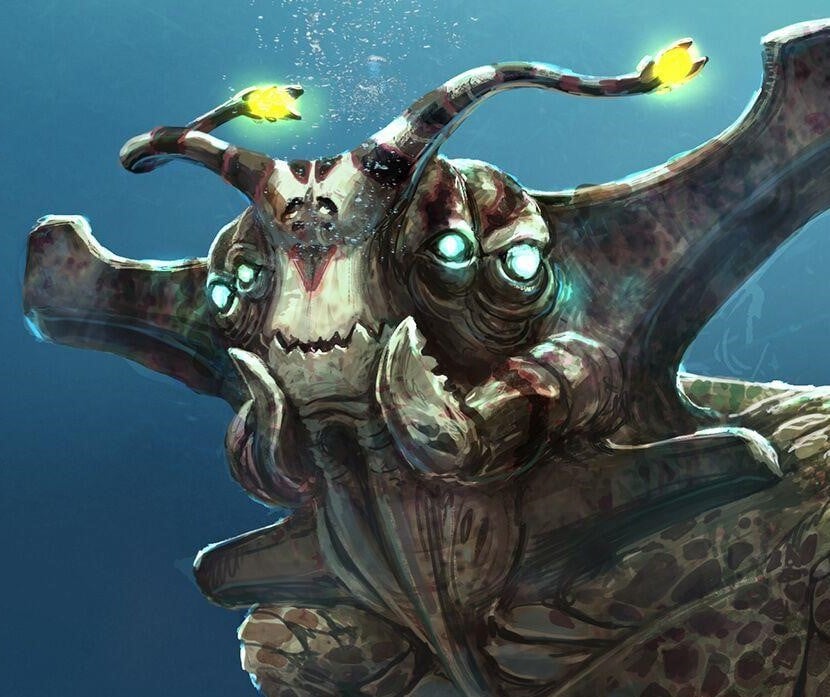Shoutout to Caves of Qud, because it wasn’t mentioned yet. I’ve been looking for a game that comes close to ZAngband which I played in the 90s. COQ has a tileset, so it’s not ASCII and I didn’t like the looks at first but it’s fun when you see how deep it is. Complex character creation, quests, factions, ‘bosses’… I think the world map is not randomly generated, the rest is afaik (ruins, multi-levelled lairs, most villages…).
Can’t really say this about Dwarf Fortress anymore
First, I can’t afford a new computer or even a new graphics card. All these “gaming on a budget” type things are all priced in USD, and I’m in Canada after conversion and the Canada tax, local shops are selling it for a lot more… I can only imagine that going up with the tariffs.
Second, graphics ain’t shit. Look at some of the most popular games around and some of them have the “worst” graphics. I don’t mean to pick on any game in specific, but I’ll mention two notable examples: the first is Minecraft. Square voxels and pretty basic visuals all around. Easily one of the most popular titles of all time. I don’t play it, but I get it. The other example I want to point to is schedule I. Honestly the graphics in the game, when compared to the nearly realistic content that games like assassin’s Creed has, and it’s basically trash by comparison. The game is huge and hugely popular. The graphics, or lack thereof, is not a detractor from how fun the game is.
Don’t get me wrong. High graphics can contribute to a good game; and therein lies the problem. You need to have a good game that you can apply the graphics to, in order for it to be valuable. If you take away the graphics and replace the visuals with something far more basic, and the game loses its appeal, your game sucks. Fix that first, then try again.
I have a pretty massive collection of steam titles that I’m planning to play as things start to devolve into higher and higher specs for basically no gains. Like ray tracing, it’s cool, looks good… But I don’t need it to have fun in a game. I usually turn it off because it compromises performance for basically no real gain. Sure, shadows look a bit more shit, and lights aren’t as glowy, but I don’t care about that. I just want to play. Why is RT a requirement for some games now? The hell?
Anyways. High graphics are better in more cinematic games, but publishers have gotten so obsessed with making cinematic content that they forgot to include a game with it.
Give me more substance, more character development, more scenes, not just action.
I never understood the point of realistic (or heavily stylized) graphics. Maybe it’s just me, but after about 5 minutes of “wow” my brain’s visual processor starts treating it as anything else, whether it’s Doom 2, Borderlands 2, or Stalker 2.
OK, but… Does anyone have recommendations for obscure text-based games? Sounds rad tbh
You can try any of the still running MUDs, multiple user dungeon
I recommend NetHack
Also check over at !retrogaming@lemmy.world
West of House. You are standing in an open field west of a white house, with a boarded front door. There is a small mailbox here.
I was going to recommend The Great Machine: A Fragment by Jonas Kyratzes (writer for The Eternal Cylinder and The Talos Principle, if you’ve heard of those), but it looks like it’s not on his website anymore :( It’s probably been close to 20 years since I played it, but I remember enjoying it. It’s about being a soldier in a war.
Holy shit, nice! Time to go back down the rabbit hole
If you count ASCII graphics as text-based games you could play CDDA. Better requirement is games that could be played over an SSH session.
Back in my BBS days I enjoyed Trade Wars quite a bit.
Does Radical Dreamers count, or not obscure enough?
Do visual novels count? They are text-based with images added on top.
Growing up, one of my best friends parents set us up with a terminal MUD connection. Basically an old school, text based only MMO. You had to type in your commands, “look north”, “walk east”, “attack <enemy name>”. I was able to make a Sayian character, walk around town and Kamehameha my foes. I recall finding Smurf village and getting killed many times by Papa Smurf.
I wish I remembered what server it was or if any even exist any more.
I played a MUD based around the combat school in Ender’s Game. That was amazing to my 2002 brain.
I’ve been running one of these since 2009, it’s a ton of fun. No saiyans or smurfs though
I remember on igorMUD we had inter Igor ballistic aardvarks
MUDs and MOOs were quite fun. I played at University as I didn’t have internet at home then, only BBSes
You think games have to be fun?
You will play pathologic and fear and hunger until the situation improves
Ice Pick are amazing. I’m a huge fan of The Void, where you are a soul in purgatory trying to survive, while appeasing the two other factions: brutish mutant Brothers that roam around taking all the resources, and docile naked Sisters that need your help to survive. The art style is utterly unique and the music/atmosphere is darkly beautiful. But it’s a stressful resource management sim at its core.
…and then there’s the second Fear and Hunger, where my first run ended with the Woodsman because I chopped off the arm holding the giant axe instead of killing his dick, and then the dick detached and went all Alien face hugger and stunned me while he beat me up with his remaining arm.
Of course I like explaining Pathologic to people as “the game that looks at a glance like it’s an FPS adjacent RPG but in which when you first get a gun you will probably immediately sell it to buy some bread”. Fucking plague caused by an infected wound in a very unusual location.
I see both sides of the argument and generally lean on the older games are fun side, but my God, just let people enjoy what they want. Gaming eletism is so annoying and doesn’t even stop people from playing new games anyways.
Get them knowledge that duenvo is an issue, not that they should be still playing super mario bros 1 or snake on a Nokia if they want to own their games.
I see your point, and I don’t think anyone is seriously proposing banning graphics. Realistically, this is more of a call to action to focus on fun.

Saving this ty
https://store.steampowered.com/app/2134320/ENA_Dream_BBQ/
Just wish it was a bit longer, but for the price of free I can’t complain. I suggest going in blind and high if that’s your thing.
Elin is the game you’re looking for.
It’s not ascii… but it is very ADOM influenced. And very japanese.
ADOM <3
Haven’t heard that name in a while
I feel like the older, pixel sparse graphical style is making a comeback.
A lot of recent surprise hits were of that style:
Valheim is also a game that’s low pixel count but due to sweeping landscapes and amazing lighting is gorgeous.
I know exactly how every beat of this conversation is going to go, but I’m still here for it.
I’ve been hearing how games are too focused on graphics since the late 1980s.
That time you remember games being all about fun? People then were complaining about how chasing visuals over gameplay was ruining games.
I know because I was there and I was complaining.
Graphics are fun and cool. I like graphics.
Design > graphics Also, strike the earth!
Design = graphics.
Or maybe Design(graphics).
Graphics ARE design. Barring very few exceptions, games communicate themselves visually. What the graphics look like, how they are laid out and how they convey the rules are absolutely fundamental parts of the experience-as-designed on every game, regardless of how technically complex the visuals turn out to be.
These arguments always bum me out a little, because they start from the premise that, say the people at, say, Yacht Club care less about or put less effort into what their games look like than larger devs using photorreal visuals, which should not survive looking at a single frame of their work.
Design = graphics.
Or maybe Design(graphics).
I would say design ⊃ graphics.
Honestly, I briefly considered going to fish for the right symbol and I decided it wasn’t worth it.
I can’t decide if I’m annoyed or proud that obviously someone was going to get pedantic about it.
I genuinely thought was going to pop out to mention I was saying design is a function of graphics with that second one before they did provide the symbol, so you’ve exceeded expectations there.
Well, I didn’t want to correct that because frankly “design is a function of graphics” is arguably true. The biggest problem with that notation is the possible implication that it’s only a function of graphics, which is obviously wrong, but as an informal notation I see no reason to insist it must be interpreted that way.
Design tsu graphics
I’m afraid I don’t know what that means.
⊃ looks like つ (Japanese character from the Hiragana syllabary that is pronounced “tsu”)
Dwarf fortress is peak.
Same word, different meanings. It may not be the technically correct definition of the word, but typically when people talk about “good graphics,” they’re talking about photorealism. In MrMobius’s comment, “graphics” = high resolution, photorealism, the kind of thing the comic we’re commenting under is talking about, and “design” = art direction, aesthetic.
ETA: That said, higher resolution can make already strong art direction even better. I think a large part of what makes Clair Obscur look so pretty is the juxtaposition of the surreal elements with the photorealistic graphics. Esquie sticks out to me in particular, because he looks so physically real, and also so alien.
I’m not trained in media criticism, so I’m sure someone else can phrase that better than I can
ETA more: Also, games that are designed to look as real as possible also take a lot of effort and talent. Just because Bodycam doesn’t look like a comic book or a surreal painting doesn’t mean it doesn’t have strong art direction. It cannot be easy to make a game that looks so indistinguishable from actual body cam footage.
Well, I assume most people splitting things this way typically think of design as gameplay design or systems design.
Either way I’d argue it’s a bit of a misunderstanding of both what goes into good non-photoreal visuals and of the concept of game design.
Yeah, I can’t tell whether they mean aesthetics > graphics or everything else that goes into a game trumps good graphics.
With the latter, I generally say that good graphics can’t save a bad game, while the former I refer to as the Wind Waker effect. People complained about how cartoony Wind Waker looked after the GameCube graphics demo showed off a realistic-looking fight between Link and Ganon, but today Wind Waker is looked back on fondly for its art style that defined many Zelda games after it while many of the “realistic” FPS games from the time are looked back on as the “real = brown” era.
Oh, yeah, that’s a branch of this argument I had almost forgotten. Such violent swings in the stylization wars.
I think these days it’s less aesthetics/graphics and it’s more photorealistic graphics/minimalist graphics, except minimalist graphics don’t register as graphics at all in some cases.
In the middle there we also have the “graphics haven’t improved since the Xbox 360” crowd. I think remembering that we spent like a decade playing games in black and white will become the new “PSOne games looked terrible and we didn’t realize” in a minute. It’s due, because now we’re in the wave of “PSOne games looked awesome, here’s a lo-fi stylized game people think took no effort to make for some reason” after people stopped referring to pixel art as “retro”.
I have to say I wasn’t ready for how much getting old makes these nerdy arguments start to pile up in sediment layers. It’s been a long trip.
It all started going downhill when Nethack added color support in 1989: https://nethackwiki.com/wiki/NetHack_3.0.4#Significant_changes
For me it was the windows telnet session window adding color support. I grew up playing a MUD.
Graphics are cool! I just also think the story, mechanics, and game difficulty balance should have an equal amount of consideration, which seems poorly lacking in a lot of modern AAA games. A mile wide and an inch deep is a saying for a reason.
The real point where this argument falls apart is that modern AAA games almost exclusively use TAA, which ruins graphics. I’m so sick of shadows blurring and everything looking terrible and people saying it’s next level.
This is very weird and I am pretty sure it can be traced to some influencer ranting about something somewhere and I genuinely don’t have the energy to go trace it back.
If you are suggesting that I got this position from listening to an influencer, I’m afraid not. I earned this opinion through my own efforts.
I had three computers in a row experience horrible shadow blurring and nothing seemed to fix it. I spent maybe 100 hours meticulously troubleshooting what the hell was wrong before asking a computer savvy friend to come over and take a look, and he was just like “Oh, that’s just TAA, everyone’s computer looks like that.” And lo and behold, if you turn anti-aliasing off, it disappears.
A couple of examples I took while troubleshooting: https://imgur.com/a/cqdgIRq https://imgur.com/a/x6mTKx0
It turns out everyone sees the same thing in almost every game, but until you notice it your brain just filters it out. In many modern games they don’t even give you the option to turn it off. I would have started a hate movement myself, but found out a r/fucktaa community already existed. No lemmy equivalent yet, I believe.
Aaaand there we go. Subreddit it is.
FWIW, it’s hard to tell from gifs, but that amount of ghosting and frame-blending is neither TAA nor a normal thing that is happening on everybody’s computers without them noticing.
I’m not entirely sure of what’s going on there, but your “computer savvy friend” was not right.
Thanks for the source, though. I had been noticing a bunch of people being simultaneously unclear about the difference between temporal antialiasing, temporal upscaling and antialiasing while somehow being extremely opinionated about it and I had no idea how it was going viral. “r/fucktaa” goes some ways towards explaining it. Also why this is probably going to get even more annoying over time as people latch on to yet another random bit of misinfo and run with it.
If those examples are really from your PC I am kinda curious to know what the hell is going on, though. What GPU are you using? Given the way you’re talking about it I’m assuming you aren’t running any custom post-processing via ReShade or any mods or anything like that?
Aaaand there we go. Subreddit it is.
If you had bothered to actually read my post you would realize that I found the sub after the fact.
FWIW, it’s hard to tell from gifs, but that amount of ghosting and frame-blending is neither TAA nor a normal thing that is happening on everybody’s computers without them noticing.
This is both reproducible and repeatable. I can reliably make it happen in several games, and it goes away completely when I turn off TAA in all cases. It has done this on all 3 of my previous computers, and it happened on two of my friend’s (who insisted it did not) computers when checked. I’m not running any custom post processing. All of our cards were Nvidia, so it’s possibly an Nvidia only thing, but even then the point stands.
I’m much more inclined to believe the effect I’ve done my due diligence to investigate is real, and that it’s simply too mild in most cases for people to notice, than believe some rude stranger with an uninformed “nu uh” and nothing else.
If you put some of that effort you put into sounding right into actually being right, you can find many clips of the same effect on youtube.
It’s not “an Nvidia-only thing”. It’s not a thing at all.
I mean, ghosting artifacts are a thing. Normally not a TAA thing, they are typically a problem with older upscaling methods (your FSR 1s and whatnot). You caaaan get something like that with bad raytracing denoising, but it doesn’t look like that. And your examples are extreme, so it’s either an edge case with a particular situation and a particular configuration or something else entirely.
This is one of those wild claims that become hard to disprove by being so detached from reality it’s hard to start. How do I disprove that hundreds of millions of people who have been gaming in games using TAA for about a decade aren’t constantly ignoring vaseline-smeared visuals on par with the absolute worst artifacts of early DLSS? I mean, I can tell you I played multiple games today and none of them do that, that I’ve played a ton of Cyberpunk and it doesn’t do that and that this is not the default state of a very well understood piece of technology.
It feels weird to even try to be nice about it and bargain. You MAY have stumbled upon a particular bug in a particular config or a game. You MAY be just mistaking “TAA” for temporal upscaling and just using some weird iteration of it in a worst case scenario. I mean, if you’re not outright trolling I can see what you call “too mild in most cases” just being some DLSS ghosting and you’re just lumping several things that cause ghosting as “TAA”. But all that is just… too much credit to the idea, if I’m being honest.
I’d still ike to know what specific GPUs you’re using and how you set up the games when it “happened” in all those computers. Direct video capture wouldn’t be a bad idea, either. I don’t know why I’m even entertaining this as anything other than some weird videogame iteration of flat earth stuff, but I’m still fascinated by how brazen it is and kinda want to know now.
What’s your favorite game? Realistic graphics or otherwise
That’s a very random question asked in a very random place.
I don’t know, what year are we on and how am I feeling that day? I’ve played thousands of games, “my favorite” is entirely meaningless.
Currently I’m trying to find time to get through Expedition 33, I just found out that there is apparently a Tetris the Grand Master 4, so I’m messing around with that. I’ve booted up Capcom Fighting Collection 2, I am staring at the 80 bucks price point on Doom Dark Ages and reminding myself I won’t have time to play that for at least a few weeks and I should wait. Steam says my most played games are Metaphor Re: Fantazio, Dragon Ball FighterZ, Street Fighter 6 and Metal Gear V. Nintendo says it is Breath of the Wild. I have 100%-ed the Insomniac Spider-Man trilogy twice. I can beat Streets of Rage 2 in speedrun-worthy times and I’ve played through a bunch of 4.
This is not a question, it’s an existential crisis.
I’ve stopped acknowledging the term AAA because I’m increasingly convinced nobody knows what they mean when they use it beyond “games that look expensive and I don’t like”.
I also don’t think there’s that many developers that don’t give “story, mechanics and game difficulty balance” an equal amount of consideration, mostly because those things are typically handled by entirely different people in any production that is bigger than a skeleton crew. It’s not like designers in big studios are just twiddling their thumbs waiting for the rendering engineers to finish the peach fuzz on people’s cheeks.
The way people perceive opportunity cost in collaborative media is always weird to me.
For me, I shy away from AAA games in general because the bigger the studio and higher the budget, the greater chance that there’s MBAs involved that will push design decisions that favour making more money over making a good game.
I think some people correlate that with graphics, maybe because the diminishing returns on effort put into graphics means those amazing graphics could have come at the cost of time spent on the gameplay elements, though I don’t personally think a great game and great graphics are mutually exclusive.
This view on things where a guy in a suit is telling a bunch of passionate artists how to do their day to day jobs is entirely separate from reality.
Don’t get me wrong, there are plenty of big, merecenary operations out there, but this is a) not how those play out, and b) very easy to sus out without needing to have a roll call of the studio.
Case in point, Baldur’s Gate 3, which people keep weirdly excluding from “AAA” was made by a large team that balooned into a huge team during the course of development. That never seemed a budget, size or graphics problem to me. Or about what degree people in the studio happen to have, for that matter.
If you don’t want to play hyper compulsive live services built around a monetization strategy that is perfectly legitimate. Gaming is very broad and not everybody needs to like everything. It’s just the categorizations people use to reference things they supposedly dislike that seem weird to me.
It’s not like designers in big studios are just twiddling their thumbs waiting for the rendering engineers to finish the peach fuzz on people’s cheeks.
This is true to an extent, but the visual fidelity of a game also determines how much work it is to author assets and (more importantly) the interactions between those assets.
If I want to make a new enemy in DOOM I have to make a series of 128x128 sprites that show 2-3 frames of walking animation from a few different angles, then add some simple programming for its abilities and AI and I’m done.
If I want to do the same thing in a game with high visual fidelity I have to make a 3D model, rig it and make animations, worry about inverse kinemetics, and make a bunch of textures and shaders to go on the model. And for anything extra I want the AI to do, or any extra gameplay element I want it to interact with, I have to worry about most of that stuff all over again.
For example, let’s say I want to add a gun that freezes enemies to both types of games. In the case of the DOOM-like game I can make a semitransparent ice texture and overlay it on all the sprites I’ve already made to make new textures, although I could probably get away with just tinting them blue. Then I have to change the enemy code to make their AI and animations freeze when hit with freeze gun and swap out their sprites to the frozen textures.
If I want to do that in a high visual fidelity game I have to think of how I’m going to cover the character in ice in the first place if I want the ice to be a 3D model. Sure I can freeze their animations pretty easily, but if they can be in any pose (including a pose generated by inverse kinemetics) when they get frozen I’m going to have to write a system to dynamically cover the model in ice crystals. I’m also going to have to author materials and shaders for the ice, and worry about what that looks like in combination with the existing materials in different lighting conditions, not only for that enemy but for all the ones than can be frozen.
This sort of stuff is mitigated somewhat by modern tooling, and mitigated even more by the production pipelines that large studios have, but its these same production pipelines that make impossible the sort of drive-by-development and flexibility that you saw in the creation of a lot of earlier games like DOOM, Thief, and Half Life 1. (And when lots of changes are made late in development you usually end up with horrific crunch and a bad game at the end.)
Ultimately there’s a reason that low-budget indie games gravitate towards pixel art or low-poly art styles. Sometimes an indie game will come out that is very high fidelity, but these will generally be walking simulators with no visually present human characters (so, no interactions or characters to animate). And its for the same reason that games with the most complicated gameplay interactions (Dwarf Fortress, NetHack, etc) or the most highly branching storylines (Fallen London) tend to be text based.
EDIT: A couple of real world examples:
This is a retrospective on the development of Anthem. While obviously a lot of bad things were going on there, including a lack of leadership or clear vision, I can’t help but think of that as an example of old style drive-by-development running up against its limits. Every time they’d change the traversal mechanic it would invalidate the world design another team already did, and how many other mechanics are tied to level design? Any time one part of the team couldn’t decide on what they wanted to do, other parts also had to redo their own work, and as a result they spun their wheels for years.
My other example is this developer. He’s clearly passionate about his work and wants it to look as good as possible, but I worry that he doesn’t realize what a can of worms he’s opened by setting that standard for animations now. Its not that he spent months learning how inverse kinemetics work, its that he’s now committed to making sure every single enemy looks good when interacting with anything it can encounter so that nothing stands out by looking jank or unfinished compared to its peers. A problem that’s made worse by the fact that it sounds like you can take control of any enemy and take it anywhere, meaning anything can interact with anything in the entire game. He has already run into a problem with his manticore enemy not being able to fit through doorways and has started talking about making an IK-driven animation where it tucks its wings in as the player approaches the door. What’s gonna happen if the player presses the fly or jump button when that’s happening? Now multiply that question for every gameplay mechanic for every enemy in the game and every weird situation that might require a custom animation.
This somewhat wall-of-text-y post is most interesting for going back to my original point about how this argument has been in place for decades with little change.
I mean, seeing Half-Life 1 pop up as an example of drive-by game development is interesting, given that it’s THE game that debuted highly scripted interactive narrative sequences. I wasn’t there, but I can only imagine the sort of planning it must have taken to figure out the complex sequences where AI entities do things in tandem with the player. I do know for a fact that it took a long time to rig any sort of map for HL1 (because they did provide the dev tools for modding and I did mess around with them). HL1’s enemy AI was an early example of a game that required level designers to manually set up navigation nodes on the geometry (because those flippy ninja enemies later in the game needed to know where they could jump and take cover). I remember it being so cool but noticeably harder to do in your spare time than, say, the old Quake stuff.
Anyway, nobody is saying there aren’t costs to complexity, but the focus on visual fidelity as a linear relationship to gameplay complexity is at best reductive. The problem is that end users can see graphics. So if something looks nice but just hasn’t figured out core aspects to gameplay it’s easier to assume one thing drove the other rather than, say, not having spent enough time prototyping, or having trend-chasing leadership change their minds multiple times about fundamental aspects of the game because something new got big last month or whatever other behind the scenes stuff may have sent development off the rails.
I don’t have time to go over the other guy’s stuff, but I will say that I respect anybody who tries to do development with their whole ass out in public, especially if they’re learning. I get anxious just thinking about it.
I don’t mean to completely disagree with you, I do think that graphics actually get somewhat of a bad rap, just that I think the tradeoff is real even if it doesn’t really scale linearly.
I mean, seeing Half-Life 1 pop up as an example of drive-by game development is interesting
Its true that Half Life 1 marked the turning point from systems focused games to content focused games with its scripted sequences and setpieces. Its also where Valve created the “cabal” development process, which was supposed to be more organized than the development for games like Quake.
I included it mainly because in the making of Half Life 1 documentary the texture artist mentioned that whenever she would make a new texture oftentimes a level designer would just grab it and use it simply because it was new and exciting. The problem was that if every level used every texture then they started to look same-y, so she actually had to start labeling the files as groups and tell people to try to avoid mixing them together. And this was supposed to be more organized than earlier games lol, you can imagine how thrown together they must’ve been.
I’m reminded of a similar story from the development of Deus Ex 1. There’s one level where you walk around an abandoned mansion searching for clues. Unlike the rest of the game, which is mainly stealth / fps, in that level you have to explore and solve a puzzle while listening to an NPC talk about her childhood growing up there. Apparently the guy making the level had to yell at his fellow level designers to stop adding enemies to the rooms of the mansion.
Anyway, sorry if my posts are really long and rambling, I just like talking about games.
I mean, that all depends on the game I suppose, but you’re assuming that sort of anecdotal interaction doesn’t happen now, which I would argue may have more to do with games not doing as much behind the scenes content right away as other media.
And if something killed it (big if), it was producers getting good, rather than graphics.
Look, games have changed a lot, nobody is denying that. The spaces for flexibility and creativity have moved around in some places, but not necessarily disappeared. It’s also true that games are more diverse now than they used to be. There are also more of them, by a lot. I have a hard time making uniform blanket statements about these things. Which of course also makes it hard to push back against inaccurate but simple, consumable statements like “the pores on characters’ skins killed fun gameplay” or whatever.
But there are tradeoffs in lots of directions here. People are talking a lot this month about Expedition 33 getting to those visuals with a small team by effectively using Epic’s third party tech very directly. That’s not wrong. You may have more moving pieces today, but you also don’t have to build a whole engine to render them or code each of them directly instead of having tools to set them up.
I wish the general public was a bit more savvy about this, though, because there are plenty of modern development practices and attitudes that deserve more scrutiny. It loops back around to the behind the scenes access, though. Nobody has time or interest in sitting down and arguing about prototyping, or why the modern games industry sucks at having any concept of pre-production or whatever. Gamers have always been quick to anger driven by barely informed takes in ways disproportionate to their interest in how games are actually made, and that part of the industry hasn’t changed.
You may have more moving pieces today, but you also don’t have to build a whole engine to render them or code each of them directly instead of having tools to set them up.
That’s definitely true. Even with my ice gun example there’s actually a system in UE5 that does exactly what I was talking about with the 3D ice crystals (though, whether it works for animated objects with deforming meshes I don’t know).
Hey, love your take on this. Can you tell us more on what is “opportunity cost in collaborative media” and how it relates to games? I don’t understand these words, and I’d rather get the explanation from a human being :3
Right. Sorry about the overly nerdy way of saying that.
Basically, people tend to think that any time or effort spent doing one thing means time and effort not spent doing another thing. So good graphics means they took time away from designing the gameplay or whatever.
But that’s not how it works. In big projects everybody tends to be a highly specialized expert. So gameplay people are doing gameplay all the way through, modellers are modelling all the way through, rendering programmers are working on rendering features all the way through and so on.
When you have big teams like that it can actually become harder to make sure everything is coordinated and organized so that nobody has to sit and wait for anybody else. Complexity does grow and changing things does become much harder, just… not in the ways people often think. It’s not like there are freely interchangeable “game units” that you can choose to spend in either gameplay or graphics but not both, you know?
It’s not like designers in big studios are just twiddling their thumbs waiting for the rendering engineers to finish the peach fuzz on people’s cheeks.
Okay! I don’t think that either. I think they’re underpaid and overworked like virtually everyone in the games industry and unable to put out quality products because of arbitrary deadlines. That kind of thing is much more common with AAA games (which studios don’t seem to know how to define either, given that now they’re going on about AAAA and AAAAA games) than it is with indie games.
I’m gonna need some sourcing for that assertion, because man, there are no more underpaid and overworked developers in the gaming industry than indies living on a friend’s garage, having two jobs and coding all-nighters on a passion project.
Crunch horror stories are real, but big “AAA” devs are more likely to have some type of overtime policy they can adhere to and a decent compensation package.
I’d argue about arbitrary deadlines, too, but it’s a case by case basis there. In any case, both indies and larger devs are often working to the same type of deadline, that being “we’re running out of money”.
Do you know people working in gaming or are you working in it yourself? Because “just ask for overtime and you’ll get it without any repercussions” absolutely doesn’t match the experience of anyone I know. Especially since people tend to jump from big studio to indie, not the other way around, for quality of life reasons.
People tend to jump from big studio to indie by way of either getting laid off or having a game they want to do that won’t get greenlit in a big studio (mostly because very few people get to even bring up projects to a greenlight process in the first place).
Working for ages with next to no financial security on the off chance that you pull off a minor miracle and get an investor backing you or your own startup money back is hardly what I call “quality fo life”. Best case scenario you have the investment already lined up on your way out of a big dev, but that is getting harder these days.
On the other question, if I wanted to share my resume I would not post under a pseudonym, so apply your best judgement there.
I’ll say this, though, if that counts for something. I am NOT in the US.
I wasn’t asking for personal information beyond whether or not you’re in or adjacent to the industry, or anything I hadn’t already shared myself, peace ✌️
Purists when an artform incorporates another artform: >:(
I’m going to be annoying for a second, but I promise to try and make it worth it: It isn’t about purism or even “fun”, because not all art is meant to amuse. Art is allowed to be anything, and we should treat critique of art (including games) an an exploration of what the creator was trying to do, to what extent they succeeded and how, what it makes you think of, and possible meanings. Play is merely one aspect of a game’s artistic content.
The entire subject of fun in terms of game design is, artistically speaking so nascent that there is hardly any history to that field of study. We’ve been making up for lost time in recent decades, but the entire concept of game theory is not even a century old.
So, that was probably annoying of me. But the point I’m here to make is that “fun vs graphics” isn’t really the conversation we’re trying to have.
One conversation we should have is the problem that exists with how games are funded and how those financial incentives can shape the creative side in a way that might hinder what’s being done with the medium. Games aren’t just art, they’re big business, and the conversation is taking place within the context of the tech industry, geopolitical trends, and even monetary policy. Now that the industry is so large, it often feels like creators working with big budgets are becoming risk-averse and often greedy. When traditional artists seem overly risk-averse and driven by financial incentives, the art world turns on them in a big way. Look at Anish Kapoor and vantablack.
Another conversation to have is graphics in gaming within the larger computing industry. We’re at the tail end of Moore’s law and the GPU market seems like it’s starting to turn away from gaming towards other perceived cash cows like LLMs and generative AI. So we should not expect graphics cards to continually get better forever, or even cheaper honestly. It’s been the case for decades, but the situation is dynamic.
For a long time, it seems like there has been a bad combination of forces at play in gaming: the promise of endlessly increasing computing power, and lurching shifts in monetary policy that lead initially to massive tech speculation and then periods of focusing intensely on profitability.
I think it’s reasonable to predict that we’re going to see smaller development budgets in gaming, increased focus on well-optimized code, a shift away from the emphasis on realism in games, or a general collapse in the “big budget” gaming industry as some or all of these fail to materialize.
Meanwhile, indie gaming has been on a hit streak. That food chain has been thriving at lower trophic levels, and no wonder. They’re taking more risks, being more generous, and reaching less highly than their larger peers. It’s a winning formula under tight monetary policy and the overall larger context.
I’ve said far too much, sorry to drop this on you.
You kinda moved things to a bit of a pre-decided set of rails there. I don’t know that the previous poster was particularly concerned about the concept of “fun” or the economics. But hey, I get wanting to find a place to say your piece.
FWIW, you’re not wrong about a lot of that, although I wouldn’t express it that way. I do have a few caveats for you.
For one thing, chasing the hardware hasn’t been as big of a deal for a while. I don’t think most game devs or execs are dumb enough to notice that WoW, Minecraft, The Sims, Roblox and a bunch of other major hits are not on the visuals cutting edge. Competing on high end visuals is comfortable for studios with access to a bunch of funding because it cuts off some of the competition, but there are big chunks of the industry where being flashy and high-tech cuts off big chunks of the potential market (mobile, handheld and PC, traditionally). A big part of this conversation is nerds consistently conflating home console and high end PC with the entirety of the gaming market, when it’s a small corner.
I’m also not sure that the investment boom and crunch thing is a cycle. Investment has been there for a long time, it is now leaving. I’m not sure it’ll come back. That will probably have the consequence of moderating budgets, as you say, but don’t underestimate how much that vacant top end for visuals will remain appetizing to some as competition there dries up.
And conversely don’t underestimate how big “indies” can get. I brought it up elsewhere, but Expedition 33 is making waves for being a small team, and they themselves have identified as “double A” a few times. But if you look at that next to, say, Persona 5, those lines start to blur a lot. As the tools evolve and, unfortunately, a bunch of experienced devs brain drain right into unemployment the ability of indies to reach scopes that were AAA just a few years ago will also increase.
On that comparison, by the way, I would not be surprised at all if it turns out all that sleek 2D UI art in Persona or Metaphor (not to mention the anime cutscenes) turned out to have been more expensive than the heavily middleware-reliant cinematic presentation in Expedition 33. Perception of cost is already out of whack and it will probably get weirder in an environment of consolidated engines and weird vectors for machine generation of assets.
Thanks for taking my wall of text as it was intended, mainly just carving out a space for a few of my hobbyhorses and trying to be slightly self-aware about it for once. I knew I was laying down a lot of railroad track and I hope nobody thinks I’m demanding to be taken seriously. Usually the username does the trick there.
I confess I don’t read enough interviews with game industry people to know where their heads are at with regard to most things. The prevailing trends they chase and talk about are very commercial in nature, and it just leaves me cold to talk about which creative choices they think will make the most money - if you have a source for more substantive interviews I’m all ears.
I do like that there are “ugly” games (low-poly, or at least less grounded in realism) that are proving that there’s money in prioritizing other aspects of the creative - but I worry that they’ll just learn the wrong lessons. I read last night that Monopoly Go! has so far spent over a billion USD on advertising alone. I am still reeling from that fact, and I don’t have a context to make sense of it. I haven’t even played that game, nor do I recall having seen ads for it. A billion doesn’t go as far as it used to, I guess.
You’re right that it’s not necessarily a cycle, any more than tectonic plate migration is a cycle. It’s too large and slow to really say how it’ll turn out. I think if we zoom out really far, it might be the case that there aren’t as many universally cherished cultural touchstones as there used to be, substantive culture feels like it’s becoming more diffuse and niche as time goes on. Even a dear friend of over two decades with largely the same tastes can talk for ages without mentioning anything I’ve ever heard of. There’s so much, everyone’s bound up in a personal little tornado of content. I guess I’m on a natural phenomena metaphor kick.
I have high hopes for the future of 2D design in games. You can work your ass off on 2D and 3D and make either look good, but the work really shows more with 2D - an example like Sea of Stars spring to mind, with their highly dialed-in Chrono Trigger looks with anime cut scenes. The tools continue to change, but you can always spot when hard work wasn’t done.
2D isn’t even necessarily cheaper. For small games there are plenty of devs who have the skillset to get some 3D models in place but absolutely could not even begin to hand-animate the same volume of assets. It’s not a linear thing anymore, if it ever was.
It’s true that most of what you hear in publicly available forums is business talk. In the industry’s defense, it’s hard to live life on a constant doomsday clock and a lot of the stuff that keeps people employed has historically been some combination of appealing to investors and successfully gaming the marketing game (and I don’t just mean for “AAA”, whatever that means).
It’s not that the artistic conversation doesn’t happen, but it lives in game jams and watercooler talks and academia. It doesn’t help that it’s often dry as all hell. It’s one thing to watch famous actors running around in costumes and talking about how long they spend on makeup every day, but who wants to hear about burndown charts and the finer points of coding some random tool to make sure every drawer in an RPG has at least one Handkerchief inside it?
For the record, I agree with you that part of it is that in a world without centralized media consumption and driven by algorithm filtering of on-demand content we are no longer all talking about the same five things. That is not just about games, but people still haven’t fully wrapped their heads around how much it’s messing things up. I one heard a games industry person say that he firmly believed the goal for an indie developer should be to “own a word on Steam’s search”, and he was not wrong, but that’s still a depressing thought. Just like if you’re making a TV show the goal is now to break the Netflix top 10 in multiple countries and so on. Storefront placement has replaced the old human gatekeepers and it’s not all bad on that process, but it’d be nice to have a door number three we can open somewhere.
It’s a little surprising that 2D and 3D are such different skillsets for game dev, since I’ve seen so much indie 2D and 3D animation being done in blender in the past few years. It’s not something I know much about in practical terms though, I’m not in the industry and I don’t know the practical tools or workflows at all. The one thing I do know is that the number of A’s there are in a conversation about game developers is roughly equal to how loud one feels like screaming.
I do worry that Steam is getting too big for its britches though, and I’m trying to spend more money on places like GOG or Itch.io. The one good thing about there being such an unremitting storm of content these days is that you can easily decide to spend the majority of your time away from the more commercially driven stuff.
The only time this was valid was when the Sega Saturn tried to do rounded 3D objects. I swear taking a single step in “Shining the Holy Ark” took 5 seconds which wouldn’t have happened if everything had edges
I think Gouraud shading was pretty cheap back then.
I gotta say, I don’t think we complained enough that gen about having every game look like a bad attempt at origami running at 15 fps.
Anybody complaining that modern games are too focused on visuals for not enough return needs to deeply rethink how we all collectively went from perfect 60fps Mega Man to whatever Mega Man Legends was.
I mean, people are still out there defending GoldenEye, and I must remind you that Doom had existed for years at that point.
And I have no problem with Doom et al I just thought Sega shouldn’t have attempted to make round objects at that tech level. It is the only generation that I felt this was the case.
laughs in Vampire Survivors
Love Vampire Survivors. Would be better without the Castlevania asset flippiness, but still love it.
But here’s the thing, people mistake being able to make a good basic-looking game with not being able to make a good visuals-focused game.
I also love Cyberpunk, Indiana Jones, Expedition 33 and a bunch of other games that care about their visuals a LOT.
The graphics on this comic are rough 😜
Definitely how it feels sometimes talking to the gamers who literally care about graphics over everything. I care about gameplay…
Dwarf Fortress has graphics now! You don’t have to install the Lazy Newb Pack! What a time to be alive
I came to ask if I could still play dwarf fortress… Now that the make it understandable to me
You can still play the ascii-version :P
The game is free, the graphics cost extra.
After seeing that docuseries on the brothers I felt even better about buying it. They seem like genuinely nice people who managed to get rich doing what they love without exploiting anyone. That’s the dream right there, and I wish them and the Balatro guy happy lives
Bought it as soon as it released. I got my moneys worth long ago.
it is very much baseline understandable now, almost RimWorld levels of graphics
But do you still need dwarf therapist to actually see what you are doing?
A way better job management subsystem was implemented that resolved at least all my personal issues.
Idk I never used it. I’m just playing the raw Steam install, it’s come a long way
No, it’s pretty understandable now. With that said, I don’t think ASCII was that bad, once you spend a handful of hours in it. It’s really not any different except the sprites replace characters, but if you knew what the character meant it’s almost the same amount of information. The sprites can give a little more information because they can actually display clothing, hair, etc. It isn’t significant though.
Graphics are cool, but I’d rather prefer a fun game over a good looking game




